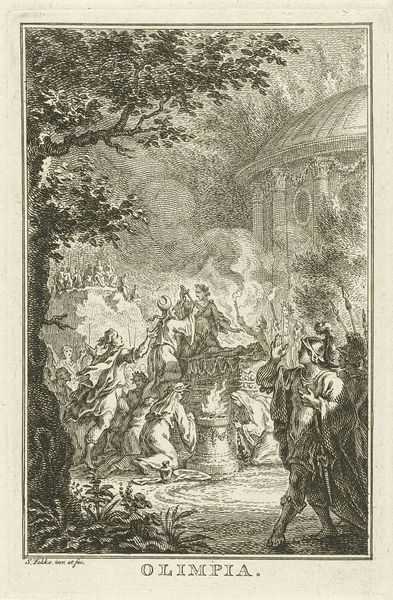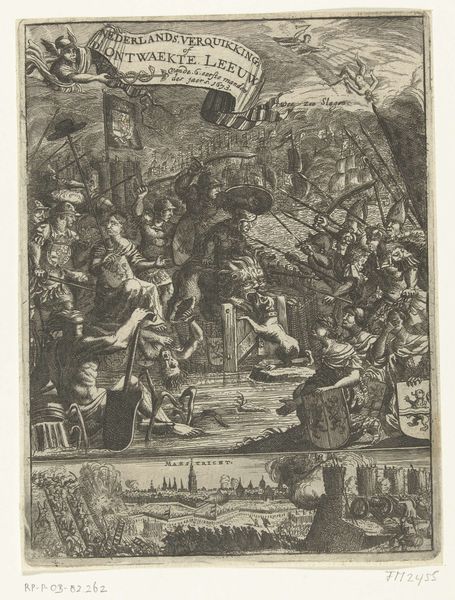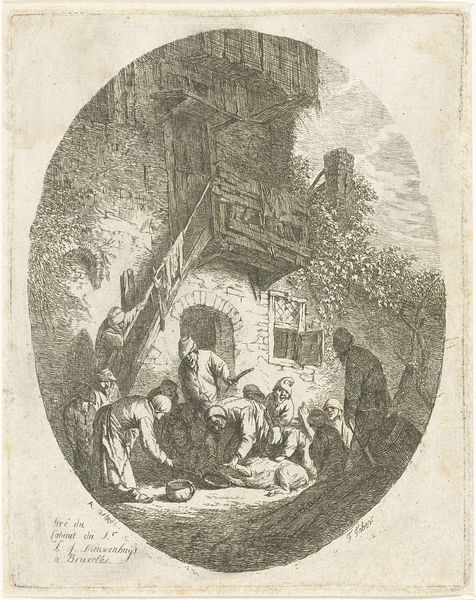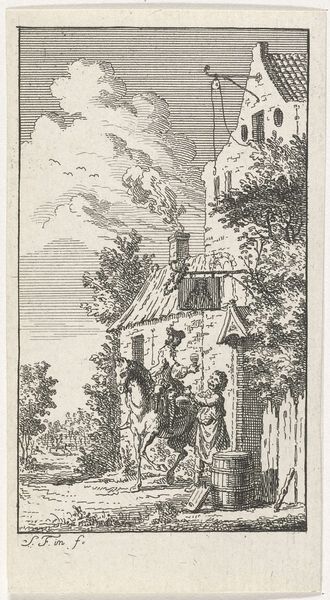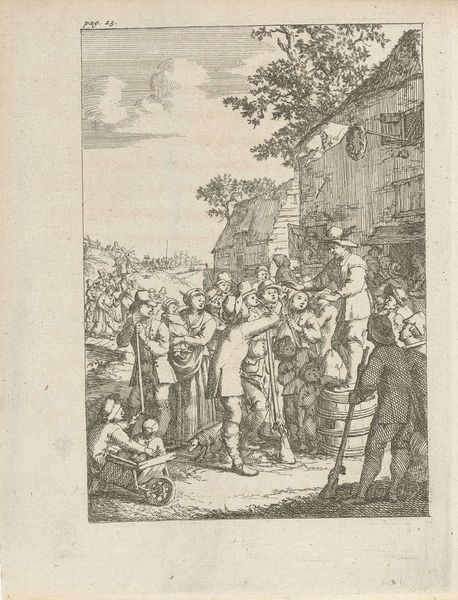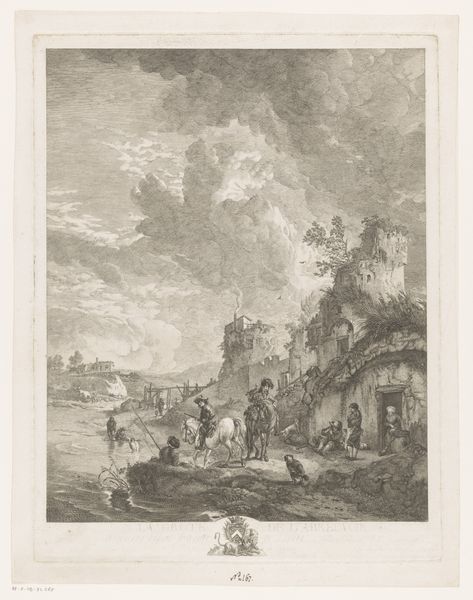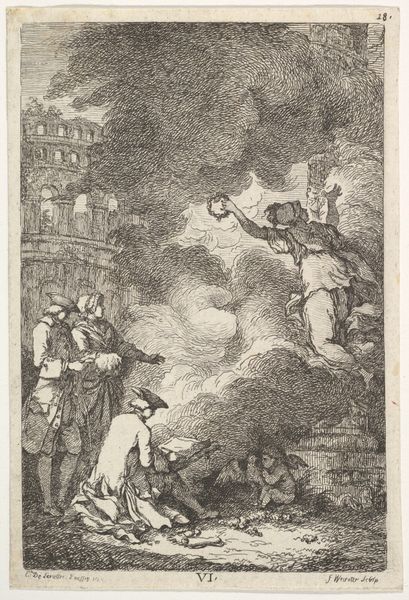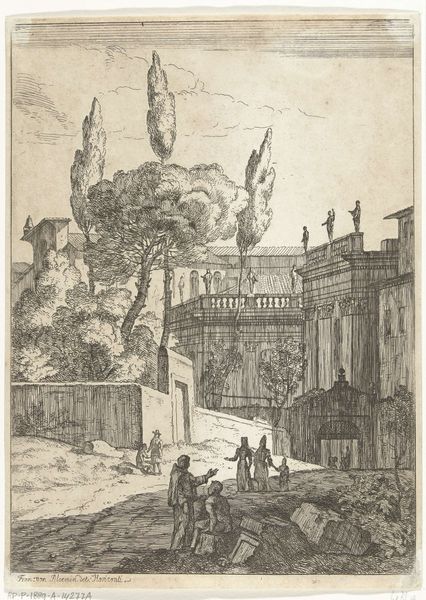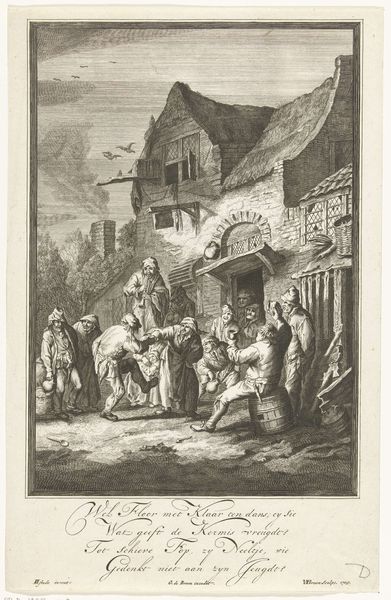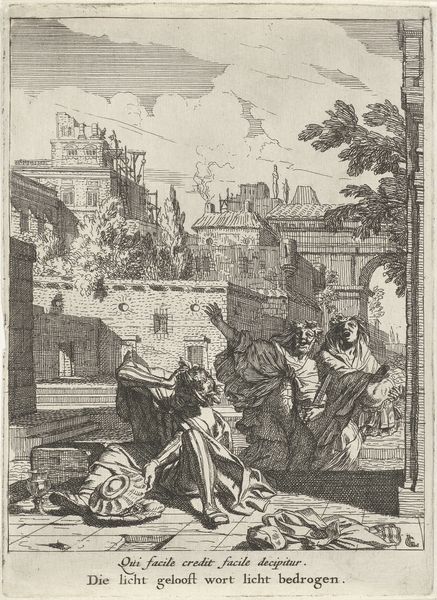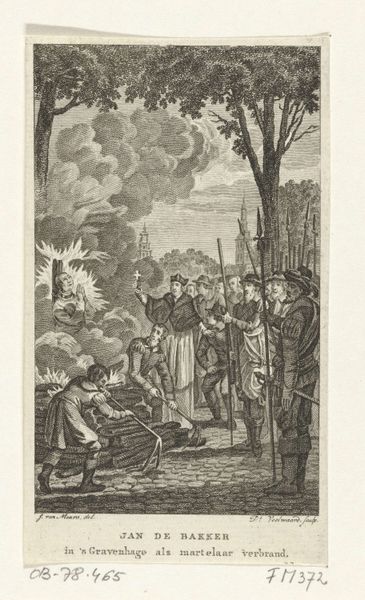
#
toned paper
#
quirky sketch
#
pen sketch
#
pencil sketch
#
old engraving style
#
personal sketchbook
#
pen-ink sketch
#
pen work
#
sketchbook drawing
#
sketchbook art
Dimensions: height 181 mm, width 133 mm
Copyright: Rijks Museum: Open Domain
Curator: What strikes me immediately is the intensity captured in what appears to be a quick sketch. You can feel the dynamism and the drama. Editor: Yes, the tension is palpable! We're looking at "Twee echtparen maken ruzie" by Gerard de Lairesse, created around 1668. It's currently housed in the Rijksmuseum. I am curious about the etching medium in the late 17th century. Curator: The engraving really lends itself to capturing these fleeting moments. Look at the quality of line, the way de Lairesse builds form with cross-hatching and varied pressure, probably using copper plates, allowing him to achieve those fine details. It certainly has the air of workshop practice. Editor: Precisely. And considering the social context of the era, the artwork prompts a number of questions. These heated domestic disputes, immortalized for our gaze… who was this imagery serving, and why? Curator: Perhaps to reflect the everyday realities of family dynamics, as domesticity was seen as a vital pillar of society at that point in history. This feels less like a celebration and more like a documentary approach; maybe even the economics of running the home! The clothing speaks to different levels of craftsmanship too. Editor: Definitely. I see that economic layering manifested through costuming, which reflects class distinctions between the figures represented. The women certainly hold different postures that could speak to economic status, and what would be expected of each. Who held social capital here? What roles and resources are available to smooth tension, if any? Curator: I like that way of reading it. Seeing beyond the immediate drama to reveal wider social structures embedded in materials and techniques opens up intriguing readings. Editor: Right. Considering it's permanently available at the Rijksmuseum today, centuries later, one wonders about its cultural accessibility. We keep interrogating the historical circumstances of these artworks so we might also bring that knowledge to our everyday life today. Curator: It really highlights the capacity of a relatively simple engraving process to contain complex, layered narratives that resonate centuries later. Editor: It serves as a small window onto larger stories, perhaps prompting us to reconsider how we look at the world and even engage each other with far more scrutiny.
Comments
No comments
Be the first to comment and join the conversation on the ultimate creative platform.

